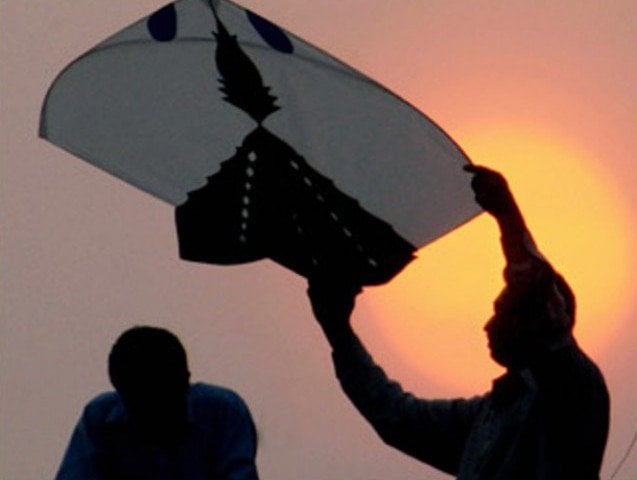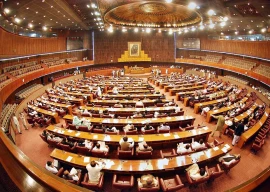
On this day, we look at some of the most beautiful places in Azad Kashmir and Jammu and Kashmir.
Kel, Neelum valley
 PHOTO: VALLEYTRACKERS
PHOTO: VALLEYTRACKERSKel (pronounced Kail) is a charming and picturesque village located at an altitude of 6,879 ft, near the Line of Control.
It is a base camp of mountaineering activities up to “Sarawaali Peak”, which is 20,755 ft high and is said to be highest peak of Azad Kashmir.
Gulmarg, Baramula
 PHOTO: KHYBERHOTELS
PHOTO: KHYBERHOTELSGulmarg, literally translated as the 'Meadow of Flowers', is a hugely popular skiing resort.
This hill station is in the Pir Panjals, one of the six ranges which make up the Himalayas and is within a few miles of the Line of Control in Jammu and Kashmir.
Pir Chinasi, Muzaffarabad
 PHOTO: PARAGLIDINGMAP
PHOTO: PARAGLIDINGMAPWith its lush green plains, magnificent weather and charming landscapes, visitors are greeted with breathtaking views of nature’s beauty.
Dal Lake, Srinigar
 PHOTO: LONELYPLANET
PHOTO: LONELYPLANETDal Lake is a lake in the summer capital of Jammu and Kashmir, and is called "Srinagar's Jewel".
Its floating gardens blossom with lotus flowers during July and August. The vast, mirror-flat sheet of water reflect the carved wooden balconies of the houseboats as well as the beautiful misty peaks of the Pir Panjal mountains.
Banjosa lake, Rawalakot
 PHOTO: CAROLYN GRINTON
PHOTO: CAROLYN GRINTONBanjosa Lake is an artificial lake and a tourist resort 20 kilometres from the city of Rawalakot in Poonch district of Azad Kashmir, Pakistan.
Located at an altitude of 1,981 metres, the artificial lake reflects the captivating beauty of the dense forest surrounding the calm waters.
Thiksay Monastery, Ladakh
 PHOTO: WIKICOMMONS
PHOTO: WIKICOMMONSBuilt in 1430 AD and home to 500 monks, Thiksay monastery belongs to the Gelukpa Order of Buddhism.
It is located on a hilltop, at an altitude of 11, 800 ft to the north of River Indus in Jammu and Kashmir. A 12-story complex, the monastery houses many items of Buddhist art, such as stupas, statues, thangkas, wall paintings and swords.
Ramkot Fort, Mangla
 PHOTO: FARID BIN MASOOD
PHOTO: FARID BIN MASOODRamkot Fort is said to be built in 16th or 17th century AD by Muslim rulers who wished to safeguard their boundaries.
It stands over the site of an old Hindu temple, the remains of which have been found during excavations. Relics from the 5th century AD have also been found here.























COMMENTS
Comments are moderated and generally will be posted if they are on-topic and not abusive.
For more information, please see our Comments FAQ